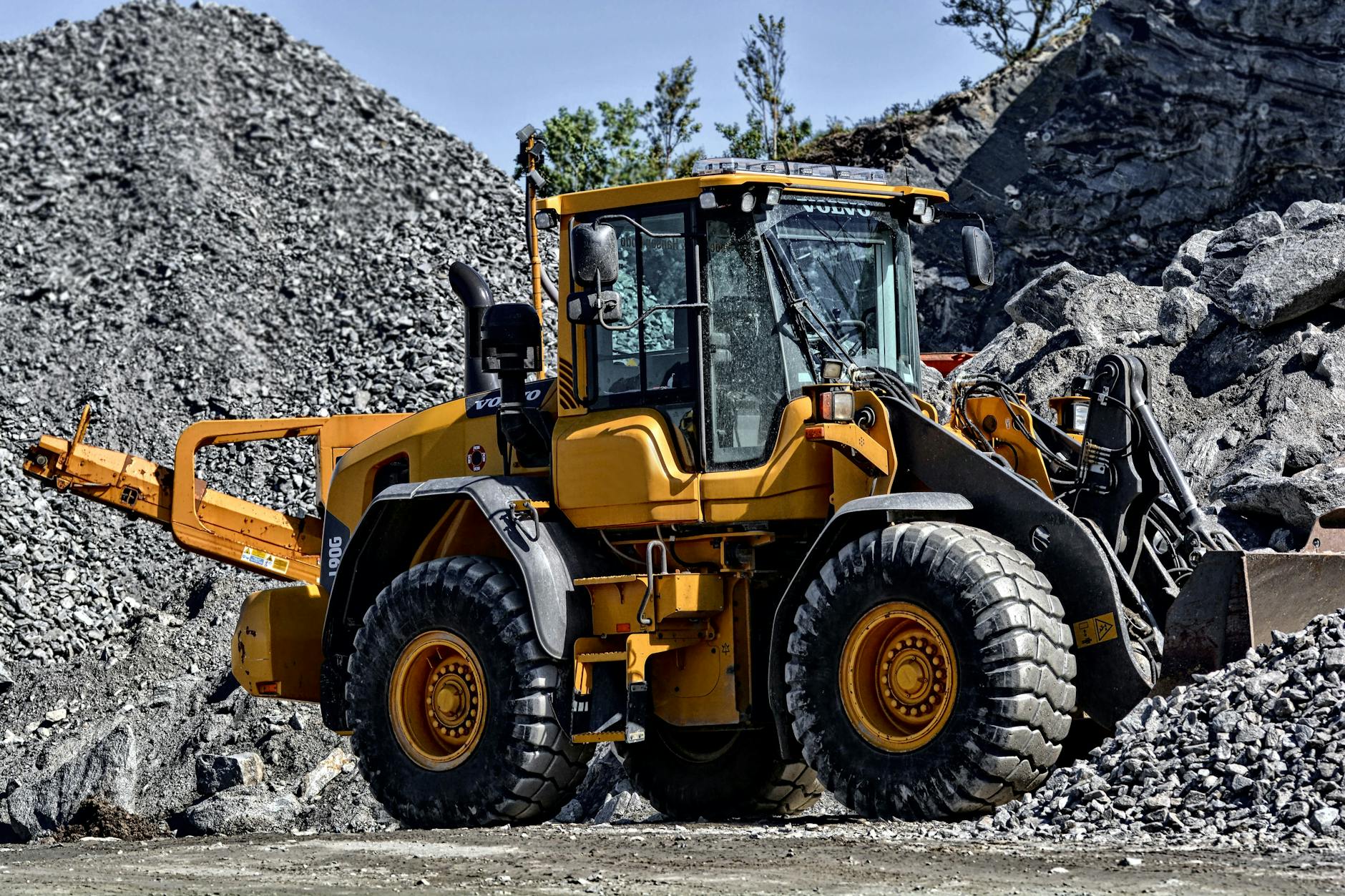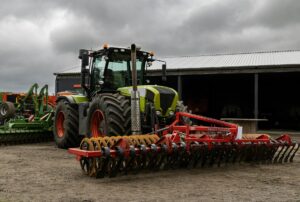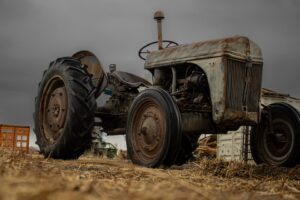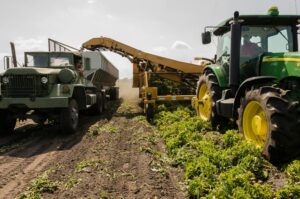Tractors are essential machines in agriculture, landscaping, and construction, helping farmers and workers perform heavy-duty tasks with ease. But how do tractors work? What makes them powerful enough to plow fields, haul heavy loads, and operate various attachments?
In this in-depth guide, we’ll break down the mechanics of a tractor, its key components, and how it works to make farming and land management more efficient.
What Is a Tractor?
A tractor is a powerful, engine-driven vehicle designed to perform heavy-duty tasks in agriculture, construction, and industry. Unlike regular vehicles, tractors are built for torque and traction, making them ideal for pulling, lifting, and carrying loads across rough terrain.
Tractors can: ✅ Plow, till, and plant crops ✅ Haul trailers and heavy equipment ✅ Operate various farming attachments (mowers, seeders, balers, etc.) ✅ Clear land and move materials
How Do Tractors Work?
Tractors function by converting fuel energy into mechanical power through their engine. This power is distributed to wheels, hydraulic systems, and PTO (Power Take-Off) shafts, allowing them to operate efficiently.
Here’s a step-by-step breakdown of how a tractor works:
1. The Engine: Generating Power
The heart of the tractor is its engine, which provides the power needed to move and operate attachments.
🔹 Most tractors use diesel engines because they provide high torque at low speeds, making them perfect for farming tasks. 🔹 Some smaller tractors use gasoline or electric engines, but diesel remains the most common. 🔹 The engine converts fuel into energy, which powers the wheels, hydraulics, and PTO systems.
2. Transmission: Controlling Speed & Power
Once the engine produces power, the transmission system determines how that power is delivered to the wheels.
🔹 Manual Transmission: Older tractors use gears and clutches to control speed and power output. 🔹 Hydrostatic Transmission: Modern tractors use fluid-driven systems for smoother operation without shifting gears manually. 🔹 CVT (Continuously Variable Transmission): Some high-tech tractors use computer-controlled transmission for optimal efficiency.
A tractor’s transmission helps: ✅ Adjust speed depending on terrain and load ✅ Control power output for different tasks (plowing vs. hauling) ✅ Prevent excessive fuel consumption
3. The Wheels & Tires: Providing Traction
Unlike cars, tractors are designed to work on rough, uneven terrain like farms, construction sites, and fields.
🔹 Large Rear Wheels: Provide better traction and torque, preventing the tractor from sinking in soft soil. 🔹 Smaller Front Wheels: Improve maneuverability, making it easier to turn in tight spaces. 🔹 Tire Treads: Deep treads allow tractors to grip mud, dirt, and rocky ground effectively.
✅ Four-wheel drive (4WD) tractors are common in large farming operations because they provide extra power and stability.
4. The Power Take-Off (PTO) System: Running Attachments
One of the most important features of a tractor is its Power Take-Off (PTO) system, which allows the tractor to power external implements like mowers, balers, and seeders.
🔹 The PTO shaft transfers engine power to attachments via a rotating connection. 🔹 Some tractors have rear, mid, or front PTOs, depending on the attachments they support. 🔹 Modern tractors use electric or hydraulic PTOs for better control and safety.
✅ Common PTO-driven implements: ✔️ Rotary Mowers – Used for cutting grass and brush. ✔️ Tillage Equipment – Plows and harrows for soil preparation. ✔️ Balers – Compacts hay and straw into bales for livestock feed.
Without a PTO system, tractors wouldn’t be able to operate many essential farming tools.
5. The Hydraulic System: Lifting & Controlling Implements
Hydraulics play a crucial role in allowing tractors to lift, lower, and control attachments with precision.
🔹 The hydraulic pump generates fluid pressure, which moves pistons and arms. 🔹 This pressure controls front loaders, backhoes, and lifting arms. 🔹 Farmers can adjust hydraulic pressure based on the weight of the load.
✅ Common hydraulic-driven attachments: ✔️ Front-End Loaders – Lifts materials like soil, hay, or gravel. ✔️ Backhoes – Used for digging trenches or holes. ✔️ Snow Plows – Clears snow from roads and driveways.
Hydraulic systems make modern tractors more versatile and easier to operate.
6. Steering & Control Systems
Tractors may look bulky, but their steering and control systems allow for smooth handling.
🔹 Power Steering: Helps maneuver large tractors with less effort. 🔹 Joystick Controls: Some tractors have joystick-operated loaders for precise lifting. 🔹 Auto-Guidance Systems: High-tech tractors use GPS-assisted steering to improve accuracy.
✅ Self-driving tractors are becoming more common, using AI and GPS to perform tasks without human intervention.
7. Fuel & Electrical Systems
Tractors need fuel and electricity to function properly.
🔹 Fuel System: Supplies diesel or gasoline to the engine for combustion. 🔹 Battery & Alternator: Powers the tractor’s lights, dashboard, and electronic controls. 🔹 Cooling System: Prevents overheating during long hours of operation.
Regular maintenance is crucial to keep the fuel and electrical systems running efficiently.
Types of Tractors & How They Work
Different tractors are designed for specific tasks. Here are the most common types and their uses:
1. Utility Tractors
🔹 Best for: General farm work, hauling, and light plowing. 🔹 How they work: Equipped with basic PTOs and hydraulic lifts for small to mid-sized farms.
2. Row-Crop Tractors
🔹 Best for: Precision planting, tilling, and harvesting crops. 🔹 How they work: Designed with adjustable row spacing for large-scale farming.
3. Compact Tractors
🔹 Best for: Landscaping, gardening, and small property maintenance. 🔹 How they work: Lightweight and maneuverable with front-end loader attachments.
4. Four-Wheel Drive (4WD) Tractors
🔹 Best for: Heavy-duty tasks like deep plowing and pulling large implements. 🔹 How they work: Uses powerful engines and dual rear wheels for extra traction.
5. Autonomous Tractors (Future Tech!)
🔹 Best for: Self-operating precision farming. 🔹 How they work: Uses AI, GPS, and sensors to run without a driver.
Conclusion: How Tractors Work in Modern Farming
Tractors are more than just powerful machines—they are essential for modern farming, construction, and land management.
🔹 Engines generate power for movement and operations. 🔹 Transmissions control speed and torque for different tasks. 🔹 PTO and hydraulics power attachments like plows, mowers, and balers. 🔹 Steering, fuel, and electrical systems ensure smooth operation.
From simple hand-controlled machines to AI-powered self-driving tractors, the evolution of tractors has revolutionized farming forever.
🔹 What type of tractor do you use or find most interesting? Let us know in the comments!



